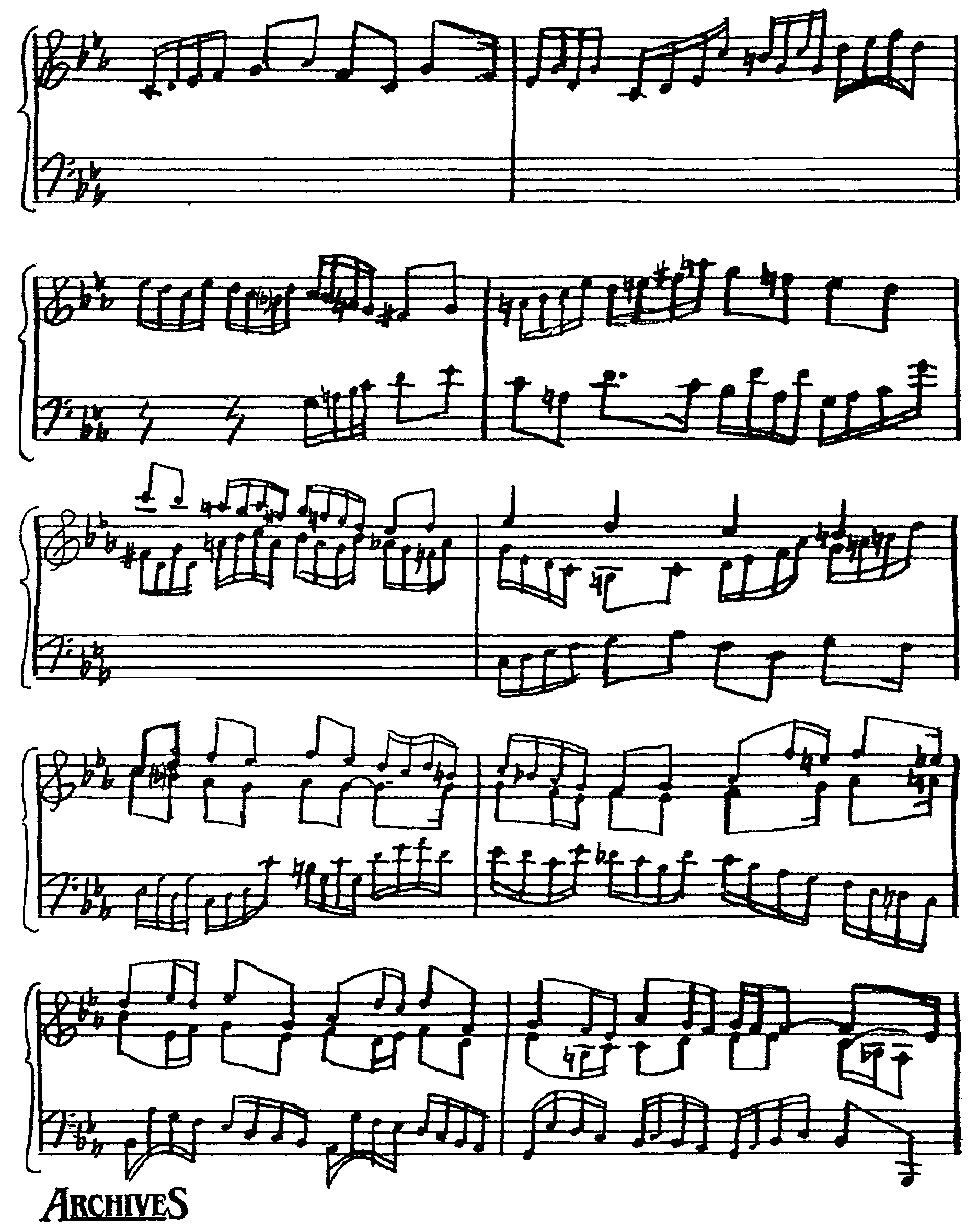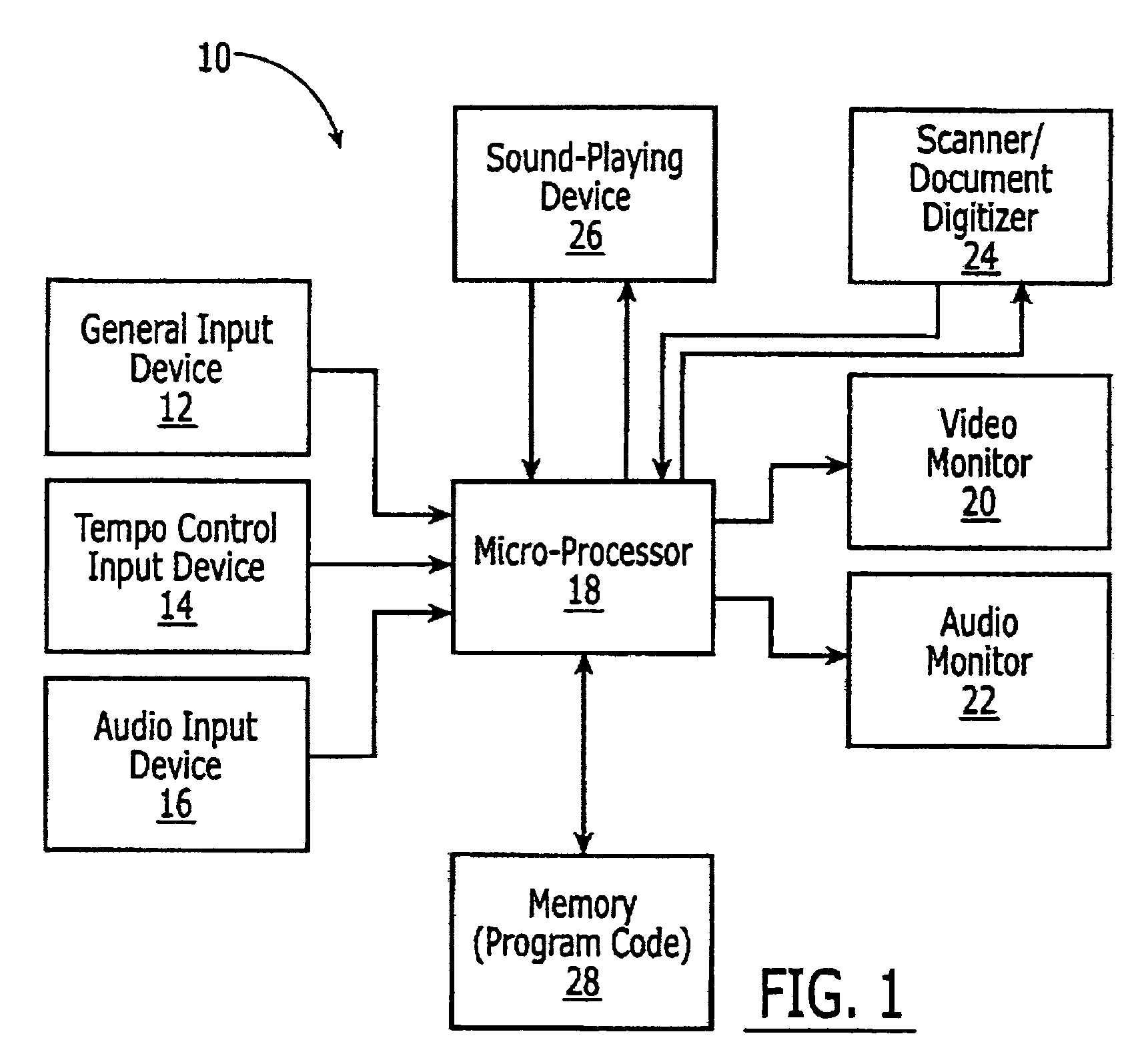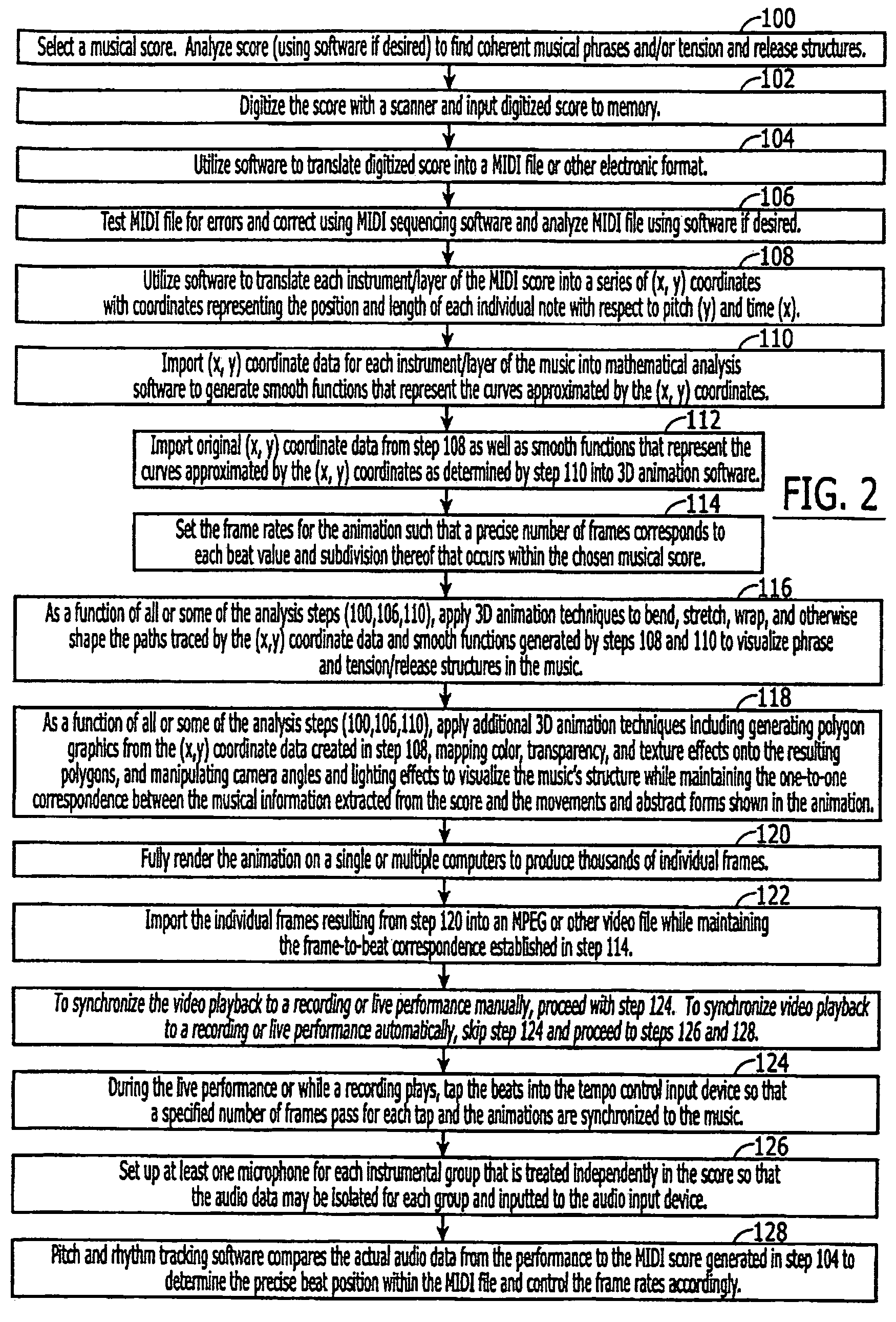Method and apparatus for generating visual images based on musical compositions
a musical composition and visual image technology, applied in the field of visualizing musical passages, can solve the problems of inability to determine which musical piece is generating the visuals, many of these systems do not even synchronize their visuals, and the visualization method utilized by these applications is extremely rudimentary in terms of how
- Summary
- Abstract
- Description
- Claims
- Application Information
AI Technical Summary
Benefits of technology
Problems solved by technology
Method used
Image
Examples
second embodiment
[0086]When synchronizing the video playback to a recorded or live performance manually via step 124, the user manually taps the tempo into the system. This can be accomplished in any reasonable fashion, such as by tapping a key on a keyboard or other tempo input device 14. The tempo input device 14 may be a foot switch so that the user's hands may be free to perform other tasks, such as some of the tasks described below in connection with the invention, in which the user may manually control the animation during the musical performance. The System provides for tapping at any desired musical sub-division from a whole note to a 16th-note triplet. The user is free to change their tapping to any sub-division during a performance to accommodate the music to which they're synchronizing. For instance, the user can instruct the system to change the taps to correspond to eighth notes rather than quarter notes at any time.
[0087]Intelligent tempo control software stored in the memory 28 allows...
third embodiment
[0122]The preferred embodiments described herein are intended to illustrate only a few possible embodiments of the invention with specific emphasis on an embodiment for performances that follow a score, another embodiment for improvisational performances, and a third embodiment for situations when only an audio recording is available. Other embodiments and modifications will no doubt occur to those skilled in the art of music, 3D animation, mathematical analysis of trajectories and curves, virtual reality simulators and rides, and other existing music visualization techniques. Such alterations, modifications, and improvements as are made obvious by this disclosure are intended to be part of this description though not expressly stated herein, and are intended to be within the spirit and scope of the invention. Thus, the examples given should be interpreted only as illustrations of some of the preferred embodiments of the invention. The invention is limited only as defined in the fol...
PUM
 Login to View More
Login to View More Abstract
Description
Claims
Application Information
 Login to View More
Login to View More - R&D
- Intellectual Property
- Life Sciences
- Materials
- Tech Scout
- Unparalleled Data Quality
- Higher Quality Content
- 60% Fewer Hallucinations
Browse by: Latest US Patents, China's latest patents, Technical Efficacy Thesaurus, Application Domain, Technology Topic, Popular Technical Reports.
© 2025 PatSnap. All rights reserved.Legal|Privacy policy|Modern Slavery Act Transparency Statement|Sitemap|About US| Contact US: help@patsnap.com



